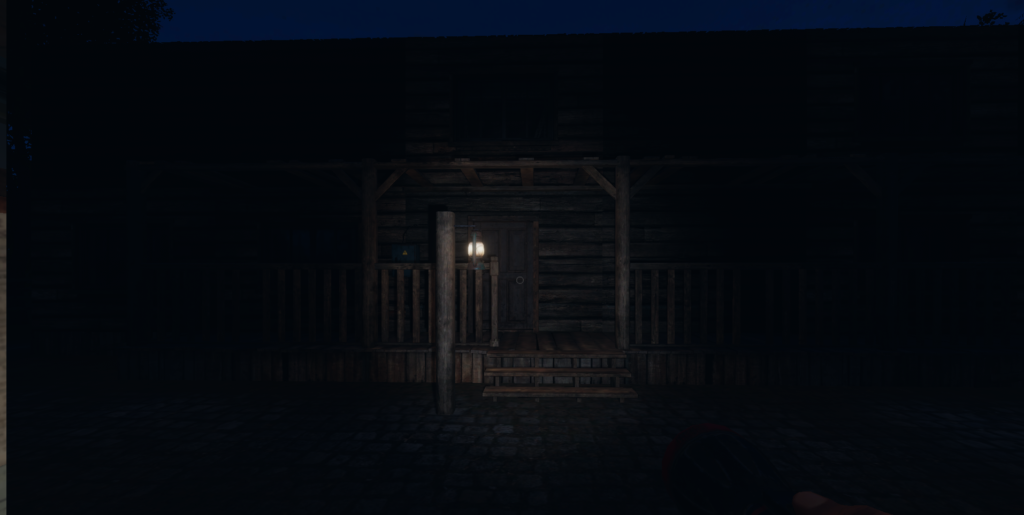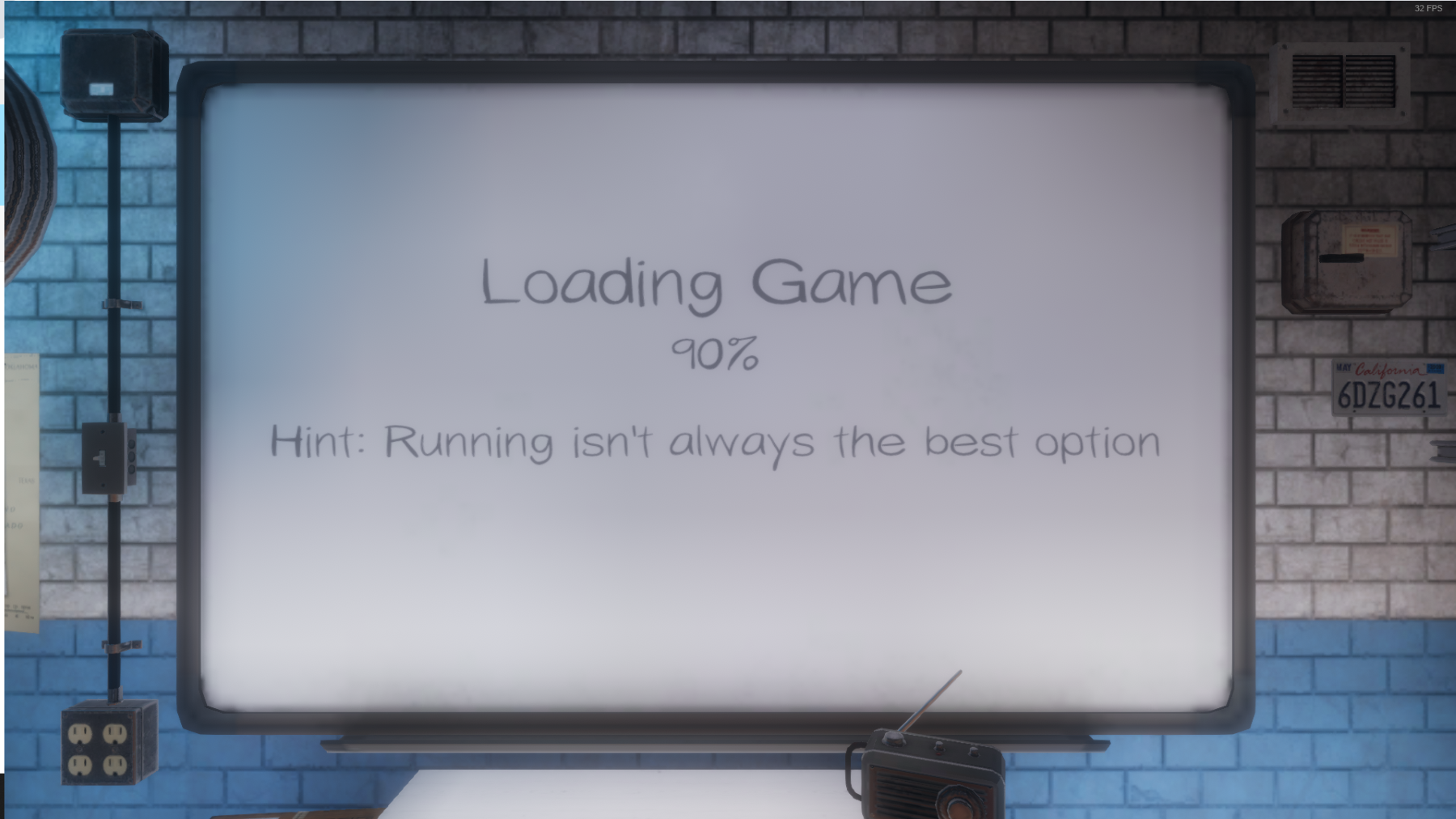Daniel (also known as Dknighter) is the newest young talent to be stirring up the gaming community. With a little under 600 followers, U.K.-based Dknighter wrote in his Twitch biography that he will often stream his “VR (virtually reality) game development.” What we now know is this development is the up-and-coming online cooperative game, Phasmophobia, which garnered almost 45,000 reviews, all described as “overwhelmingly positive” — not bad for the 24-year-old.
Released on September 18 by Kinetic Games as early access (meaning it is still in development) on gaming platform Steam for $15 CAD, Phasmophobia puts you, along with three of your friends or strangers, into the role of a ghost hunter — think very literally about the show Ghosthunters or Paranormal State.
The game is believed to have been developed solely by the aforementioned Daniel. His Trello (an application for tracking software development) shows tasks dating back to January, suggesting Daniel has spent much of the year developing this wildly popular game.
Headsets with a microphone are absolutely necessary for this game to communicate with your teammates. I have also played this on both my Acer Swift 3 laptop and my PC, the latter of which certainly runs it better. The laptop is capable, but gameplay is choppy and I had to adjust the settings considerably to achieve smoother graphics.
There are three difficulty levels: Amateur, Intermediate, and Professional. Each gives you different grace periods before you are susceptible to the ghost hunting you. The grace periods are five minutes, two minutes, and no grace period, respectively.
You begin the mission in a truck. On the walls you find all your equipment (cameras, thermometers, and flashlights, to name a few), activity trackers, a map layout, and player status. You also have a whiteboard with four objectives, such as detecting a room with a temperature below 10 degrees Celsius, or witnessing a ghost event. Achieving additional objectives gets you more money, alongside higher difficulties, to buy more equipment.

The objectives board found in the truck, along with information about the ghost. (Courtesy of Victoria Silman)
But there is a caveat: If you die in higher difficulty maps, you lose more of the equipment you’ve added (or potentially all of it).
From the time you open the door of the building, whether it be an asylum, a high school, or a house, the clock begins ticking and the ambient noise fills your headset.
With the equipment you are provided (or buy and add to the game), you begin to locate and identify one of 12 ghost types. You can carry up to three items — I usually go for a book, a flashlight, and a thermometer. There are three clues that suggest what type of ghost it is, which you then put into your journal.

The journal documents evidence found and it will deduce the possible ghost types along with its probability, weakness and strength. (Courtesy of Victoria Silman)
Some ghosts (being near or seeing one), darkness, and certain maps (Asylum) can greatly impact your sanity levels, leaving you more susceptible to being hunted. Teammates can track sanity levels in the truck you arrive in. That is also where equipment is stored and sanity, ghost activity, and cameras can be viewed. When in hunting mode, the ghost can find and kill you.

Setting up cameras allows you to monitor the premises from inside the truck. (Courtesy of Victoria Silman)
One gamer, Director of York Lions Esports and third-year computer science student, Shadman Azad, says he feels Phasmophobia is unique to the gaming community. “It is a simple take on the horror genre, but it is done well. The atmosphere and sound of the game is what I loved, and especially the ability to share this experience with your friends.”
With other games in the horror genre, such as Dead by Daylight, jump scares seem to be the overarching experience that makes the game scary. With Phasmophobia, the experience lays within the ambience and atmosphere. Darkness, heavy ambient noise, and the occasional creepy noise from the ghost (footsteps, heartbeats, or an ominous gurgling) play with your psyche.
The game has been developed to work cross-platform for those playing on VR headsets, as well as those playing on their regular old PC’s. Regarding the VR experience, Azad says, “it is a totally different experience and it’s WAY scarier.”
Phasmophobia has also been developed to include voice recognition, meaning when you use the voice feature in the game, you can actually speak with the ghost. Whether it be speaking through the spirit box to obtain evidence or using its name to agitate it (something that is provided to you before you enter the building), the voice recognition option certainly adds a level of fear and anxiety that exists in only a few other games.
A bug that has presented itself is with the Voice Over IP (VoIP) — how you talk to your teammates. Sometimes this stops working, meaning your teammates can’t hear you. But, according to the developer’s notes, the ghost can still hear everything you say.
Azad also comments on this, stating: “The unique part of the game is the sound design and the whole atmosphere when you enter the ‘ghost’ house. Especially how the ghost interacts with you like writing in the notebook, talking to you via spirit box, hearing laughter or the ghost appearing for a quick scare.”
“The unique part of the game is the sound design and the whole atmosphere when you enter the ‘ghost’ house. Especially how the ghost interacts with you like writing in the notebook, talking to you via spirit box, hearing laughter or the ghost appearing for a quick scare.”
The game is currently still under development, which means some issues do arise throughout game play.
“There are a couple of bugs or things that need to be improved to smooth out the gameplay. One of the glaring issues is the loading times are all over the place,” Azad says. “But one thing to keep in mind is that the game is made by a single developer. Hopefully, more developers are hired and more content can be pushed out.”
The developer’s Trello mentions some known bugs he is currently addressing. The application also allows the public to make comments that the developer can also address. Going forward, the hope is that Daniel can quickly expand the game, and his team, to avoid falling off the radar of gamers.
For gamers like myself and Azad who have put many, many hours into the game, we agree that the current gameplay can become predictable. Smaller maps are far more predictable (there are only so many places a ghost can be), and finding the ghost, especially when continuously playing with the same teammates, becomes an easy three-step routine.
“Definitely more maps are needed. Also, I would like to see more unique ghost interactions (i.e different ways ghosts come to attack you, or its appearance),” Azad says.
“But I did look at the developer’s roadmap and it says three new maps, new ghost sounds, ghost types, and ghost interactions are on the way. Hopefully more developers are hired and they can push the workload mentioned in the roadmap.”
Gamers can expect to see a prison, an apartment, and a mansion map added to the game’s repertoire.

Bleasdale Farmhouse is one of seven maps currently, categorized in “small.” (Courtesy of Victoria Silman)
Despite the predictability after roughly 64 hours of gameplay, I can still say some level of fear and anxiety remains when I step foot into the buildings. Bringing new players allows you to experience the game in alternative ways, with their terror adding to the fun.
For the time being, my crew and I plan on waiting out the full release for some variety. While it has become relatively easy (even on Professional mode), I still plan on playing casually and occasionally for a few scares. My hope for the game is that the developer can aim for full release soon to prevent boredom. With more maps, ghost types, and variations to gameplay, the replay value of Phasmophobia will be more evident.
It would also be interesting to see dead players have some capabilities, such as communicating with their teammates through paranormal means (whether that be through the spirit box or a telephone). At the moment, dead players move around in a type of purgatory and can see some evidence, but can’t communicate this to the living.
I would certainly recommend this to other gamers for casual, spooky gameplay, especially this Halloween for that haunted house feel. The social aspect alone makes the game fun, but also it’s something new and interesting in the world of the horror genre. I’d also recommend getting your hands on it before the full release, when the cost of it is anticipated to increase.
When asked whether he would recommend this game to others, Azad says: “I would recommend this game to anyone if you have a bunch of friends to play it with. The experience with your friends is so worth it, just to have them screaming and yelling. These experiences are so memorable and you all can laugh about it.”
The developers Trello is also currently open to the public to provide suggestions and comments about future developments, bugs, and tasks the developer is currently working on.
Knowing further developments are coming, I feel confident the game can only improve. And, what better way to spend Halloween than in absolute fear?


